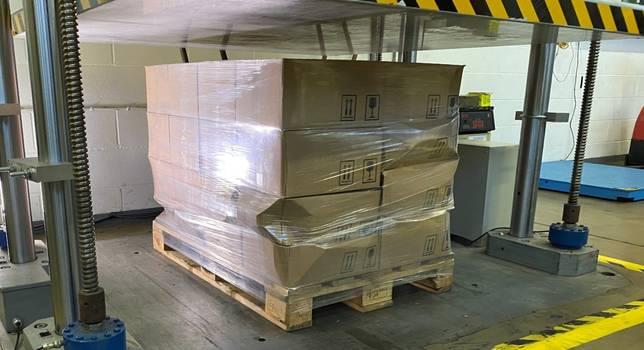Laboratory testing is designed to compliment real-life shipment validation, and often it is immediately apparent that a laboratory test is needed (for example, in the case of regulatory compliance). In some cases a field evaluation may be required to deliver a greater insight on a particular performance issue.
When comparing a real life shipment test as an alternative to laboratory package testing, there are various important benefits associated with running laboratory simulation:
1. Control
Conducting distribution testing in a laboratory environment provides the ability to control the test intensity level. This means that testing can be undertaken at a range of intensity levels – representing the range of real life shipment and handling severities, providing performance trends and data on performance for different supply chain conditions. If testing is only conducted using real life ‘live’ shipments, the true hazard levels are not known for any given shipment, making the testing subjective.
2. Regulatory compliance
Testing is often carried out because of a need to adhere to regulatory compliance, whether national or international. Laboratory distribution testing is recognized by regulatory authorising bodies such as the FDA and MRHA, and working with an experienced distribution testing laboratory can provide invaluable additional insight into the relevant regulations.
3. Repeatability and objectivity
During testing, the ease of repeatability is an extremely important factor – and the laboratory is the ultimate environment for achieving repeatability. Repeating the test under exact conditions gives you the flexibility to repeat the test at a later time, or with modified samples. Additional variables can also be added as part of a comparison testing procedure. Laboratory testing provides a high degree of objectivity when comparing different test sample variants.
4. Cost savings
Laboratory testing is usually more cost effective than real life shipment because of the hidden costs which can occur during real life trials. Over the years, we’ve had numerous conversations with clients who confirm that with all of the hidden costs of real life trials included, laboratory testing is normally the more cost effective option.
5. Real-time monitoring
In the laboratory environment, it is possible to observe the performance of packaging and product in real time, and video or high speed video tools can be used to capture the process for further analysis. As a thorough testing procedure, often it is through real time observation that the root cause of a problem can be identified.
6. Accelerating time to market
A laboratory environment allows rapid simulation of extended timeframe routes/journeys, and can carry out a custom testing schedule based on a client’s need and the intended product journey. Laboratory testing shortens the validation process compared with a real life shipment trial, and should the test need amendments it can easily be restarted.
Find out more about our distribution testing services.





